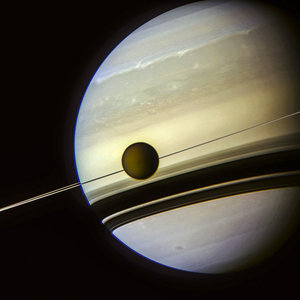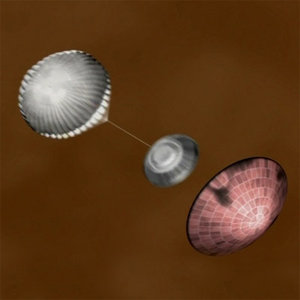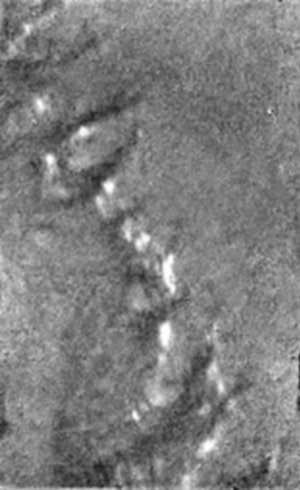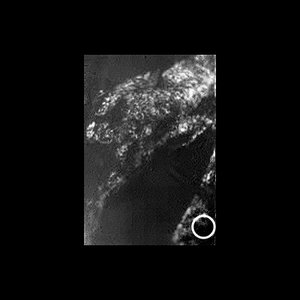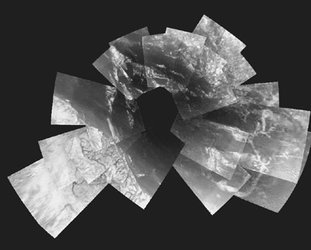Hydrocarbon lake on Titan?
The NASA/ESA/ASI Cassini spacecraft has identified an intriguing dark feature that may be the site of a past or present lake of liquid hydrocarbons at Titan's south pole.
This feature, seen here at left of centre, is unique in our exploration of Titan so far. Its perimeter is intriguingly reminiscent of the shorelines of lakes on Earth that are smoothed by water erosion and deposition.
The feature lies in Titan's cloudiest region, where frequent convective storm clouds have been observed by Cassini and Earth-based astronomers. This is presumably the most likely site of recent methane rainfall.
It is possible that some of the storms in this region are strong enough to make methane rain that reaches the surface. Given Titan's cold temperatures, it could take a long time for any liquid methane collecting on the surface to evaporate, so a methane-filled lake could persist for a long time.
Despite earlier predictions, no definitive evidence for open bodies of liquid has been found on Titan. Cassini has not yet been in a favourable position for using its cameras to check for glints of light from possible liquid surfaces in the south polar region.
Eventually, as the seasons change over a few years, the convective clouds may migrate northward to lower latitudes. If so, Cassini's cameras may record changes in the appearance of the surface as well.
Although the true nature of this feature is not yet known, if this interpretation is correct, then other very dark but smaller features seen in the south polar region, some of which are captured in this image, may also be the sites of liquid hydrocarbon reservoirs.
An alternative explanation is that this feature was once a lake, but has since dried up, leaving behind dark deposits. Yet another possibility is that the lake is simply a broad depression filled by dark, solid hydrocarbons falling from the atmosphere onto Titan's surface. In this case, the smoothed outline might be the result of a process unrelated to rainfall, such as a sinkhole or a volcanic caldera.
The Cassini spacecraft took a series of images over several minutes with its narrow-angle camera during a distant fly-by on 6 June 2005. The images were combined to produce this sharper view of Titan's surface.
The suspected lake area measures 234 kilometres long by 73 kilometres wide, about the size of Lake Ontario on the US-Canadian border.
A red cross below centre in the scene marks the south pole. The brightest features seen here are methane clouds.
For more information:
Jean-Pierre Lebreton, ESA Huygens Mission Manager
E-mail: jplebret @ rssd.esa.int















 Germany
Germany
 Austria
Austria
 Belgium
Belgium
 Denmark
Denmark
 Spain
Spain
 Estonia
Estonia
 Finland
Finland
 France
France
 Greece
Greece
 Hungary
Hungary
 Ireland
Ireland
 Italy
Italy
 Luxembourg
Luxembourg
 Norway
Norway
 The Netherlands
The Netherlands
 Poland
Poland
 Portugal
Portugal
 Czechia
Czechia
 Romania
Romania
 United Kingdom
United Kingdom
 Slovenia
Slovenia
 Sweden
Sweden
 Switzerland
Switzerland




























